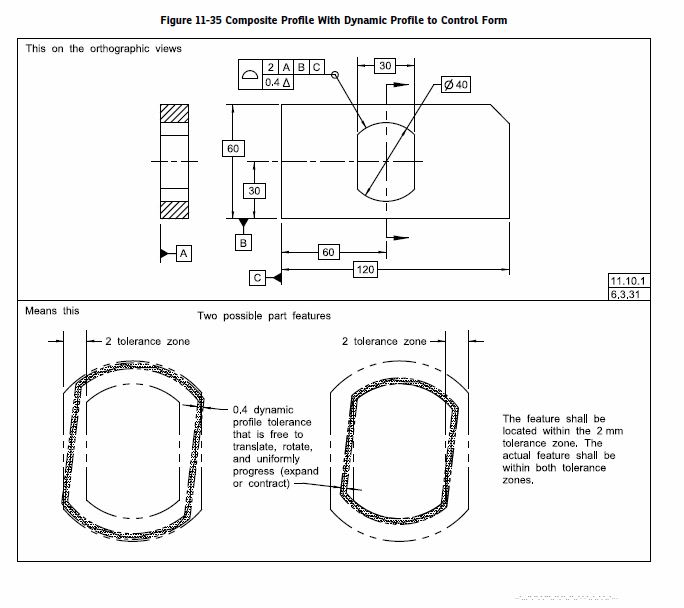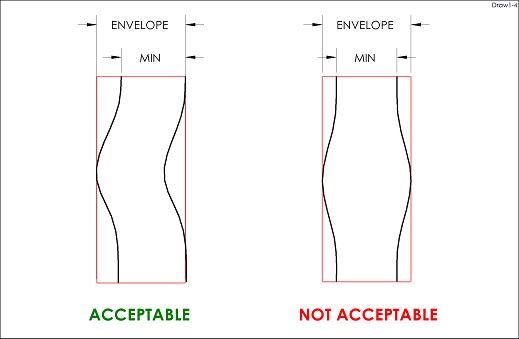Burunduk
Mechanical
- May 2, 2019
- 2,580
Please consider a design intent where the variation on the width of a feature of size is more important than the measured value itself. For example, a part feature needs to be of width 4.1mm Max and 3.9mm Min, but the variation on that feature width can only be within 0.07. For example, if the width along the actual produced feature varies between 4.03 and 4.1 the part is acceptable. But If the width varies between 3.95 and 4.05 the part should be rejected as the variation is within 0.1 which is more than 0.07.
How would you specify this requirement in accordance with ASME Y14.5 (any revision year)? Would you attempt to achieve this requirement by a geometrical control or combination of controls (size and parallelism? Some sort of profile? Size and form tolerances? Size and runout tolerances?) Or would you specify 4+-0.1 and write a custom note describing the variation requirement?
How would you specify this requirement in accordance with ASME Y14.5 (any revision year)? Would you attempt to achieve this requirement by a geometrical control or combination of controls (size and parallelism? Some sort of profile? Size and form tolerances? Size and runout tolerances?) Or would you specify 4+-0.1 and write a custom note describing the variation requirement?



